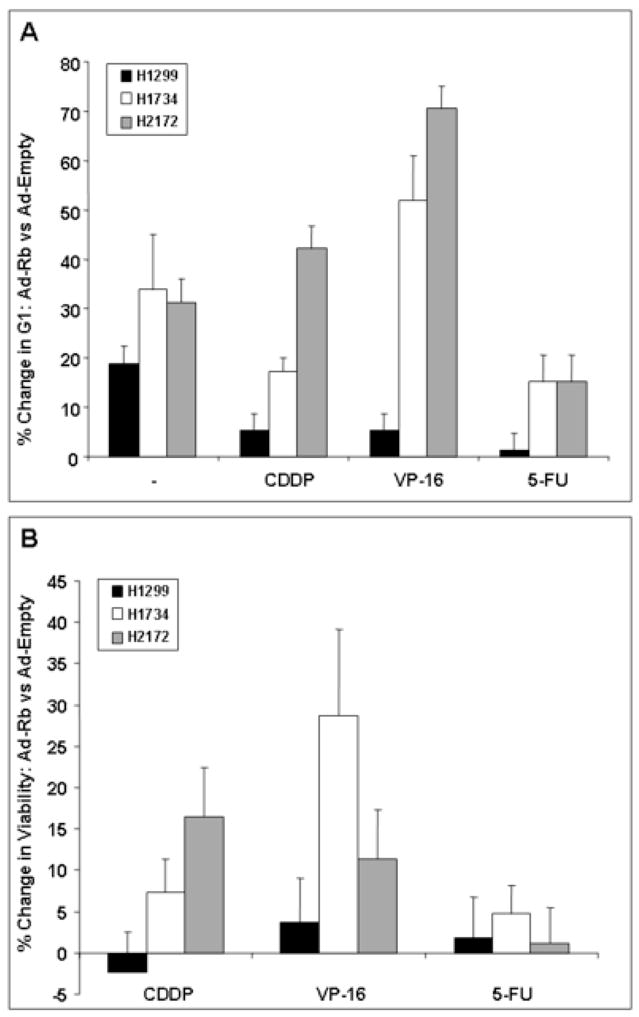FIG. 4.

RB reconstitution leads to increased efficiency of the G1 arrest mechanism and increased cellular viability in response to chemotherapeutic exposure. (A) Graph represents the increase in G1 population in Ad-RB infected cells compared to Ad-Empty (control) virus, and exposed to chemotherapeutic challenge. In the RB-deficient cells (H1734 and H2172), RB overexpression (compared to the control infected cells) increases the G1 population after exposure to chemotherapeutic agents thereby restoring G1 checkpoint activity. (B) MTT assays were utilized to determine cellular viability of Ad-RB infected cells versus Ad-Empty (control) infection after chemotherapeutic exposure. Return of RB function via adenoviral delivery leads to decreased chemosensitivity in RB-deficient cells (H1734 and H2172) to varying degrees depending on the agent and the cell line. All values represent the average of three independent experiments and error bars represent one standard deviation. CDDP = cisplatin; VP-16 = etoposide; 5-FU = 5-fluorouracil.
